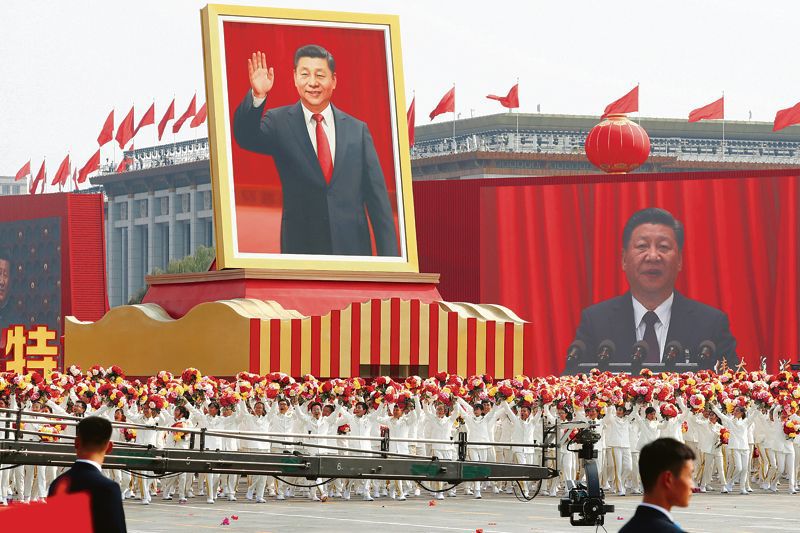PLA reorganisation has implications for China’s neighbours
APPARENTLY undeterred by the turbulence in the People’s Liberation Army (PLA), sparked by the disappearance of China’s then Defence Minister Gen Li Shangfu and the ‘removal’ soon thereafter of the Commander and Political Commissar of the PLA Rocket Force and at least 11 other Generals, Chinese President Xi Jinping has effected the largest reorganisation of the PLA since 2016. It demonstrated his grip on the PLA. It showed that the PLA officers have imbibed lessons from their close study of the wars in Ukraine and Gaza. One major lesson has been the importance of propaganda and the ability to craft and shape popular perceptions. In Gaza, for example, Israel found that it lost global popular support, which had suddenly and overwhelmingly shifted in favour of Palestine. This was one backdrop that possibly precipitated the dissolution of the PLA Strategic Support Force (SSF) and the establishment of the PLA Information Support Force (ISF).
On April 19, Xi announced the formation of the PLA
ISF. He simultaneously announced the establishment of the PLA Aerospace Support Force and the PLA Cyberspace Support Force and the dissolution of the PLA SSF. The order of precedence for the new services, important for the hierarchy-conscious PLA, was indicated as thus: the PLA Aerospace Support Force, PLA Cyberspace Support Force, PLA ISF and the Joint Logistics Support Force. Each of these is now an independent entity at the Deputy Theatre Commander-level, reporting directly to the Central Military Commission (CMC). They have single missions and are focused on one aspect of warfare, which would be intended to make command and control, as well as their performance, more effective.
Among the reasons for the reorganisation would be that the capital-intensive PLA SSF encompassed a range of varied aspects of modern hi-technology warfare capabilities, probably making it difficult for the PLA SSF Commander to pay adequate attention to the individual specialised forces under his command. At a time of rapid advances in technology and battlefield tactics evolving on the battlegrounds in Ukraine and West Asia, which the PLA leadership has been studying and analysing very carefully, this would be an impediment to the PLA becoming a world-class military capable of fighting and winning wars.
As the conflicts in Ukraine and West Asia have also shown, the battle of perception has become very important in present-day warfare to win popular support and influence outcomes. Information warfare and shaping scenarios has been noticeably prominent and successful in both these conflict zones. Reorganisation of the SSF will ensure focused attention and better utilisation of funds for each force. Since all forces are specialised, they will establish separate training establishments so that professionally competent personnel are available.
The main functions of the PLA ISF, as presently discernible, includes communications, including satellite communications, analysis of battlefield environment and target data, and maintenance, disruption and monitoring of cyber and communications channels. Many of the entities integrated into the ISF are from the SSF.
Available information shows that the agencies integrated into the PLA ISF include the headquarters of the now-disbanded SSF, the Information and Communication Base, and the Information and Communication Brigades of the Xinjiang and Tibet Military Districts. Additionally, it encompasses the Target Data Battalion, Battlefield Environment Battalion, Communications Support Battalion, Spectrum Control Battalion, and the Intelligence Analysis Centre of the Joint Staff Department of the CMC. Certain functions and capabilities from the Battlefield Situation and Strategic Early Warning Sub-Centres of the Joint Operations Command Centre of the CMC, as well as the Battlefield Situation Battalion, Information Service Battalion, and Command Operations and Maintenance Battalion of the Theatre Command Joint Operations Centres, have also been integrated. Furthermore, some forces from the 35th Base and the Satellite Communications Centre of the former SSF, along with the Battlefield Environment Research Institute and the Network Information Research Institute of the Systems Engineering Research Academy of the Academy of Military Sciences, are now part of the ISF.
Most personnel of these formations and units would have been retained and moved to the ISF with their original units. The leadership elements would largely have been left undisturbed. The Commander and Political Commissar of the Aerospace Force and Cyberspace Force could similarly have been left in place.
Earlier, speaking at the National People’s Congress on March 7, Xi had focussed on the building of strategic capabilities in emerging fields, the need to understand developments in emerging fields, and efficient integration of new productive forces and new combat forces.
Xi also underscored the importance of innovation and deepening reform of the national defence science and technology industry system. He stressed the importance of “integrating preparation for maritime military warfare, safeguarding of maritime rights and development of the maritime economy”. He simultaneously highlighted the importance of a network space defence system and enhanced safeguards for national network security.
The reorganisation has implications for China’s neighbours. Creation of the ISF implies increased attention to signals and electronic monitoring, interception and disruption capabilities. It will probably be responsible for disinformation campaigns and will enhance its cyber warfare capabilities. The ISF will be under pressure to show results, and cyberattacks and disinformation campaigns against targets — Indian, South Asian, South East Asian, etc. — can be expected to increase. The Dalai Lama’s establishment would equally be a target. An important area of focus for the new force will be the maritime domain and particularly the Taiwan Strait and South China Sea.









